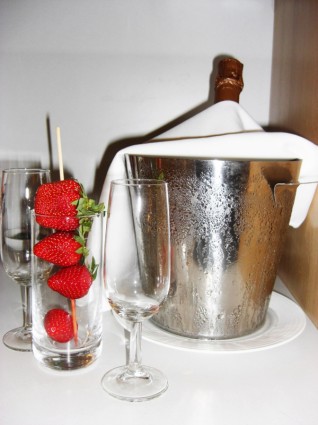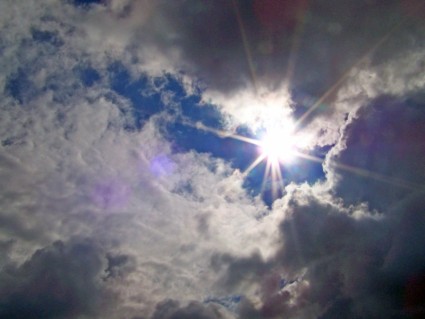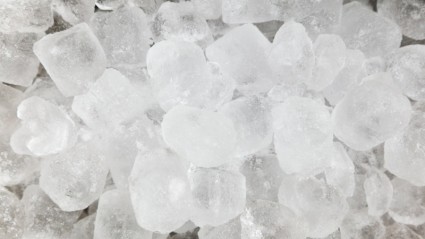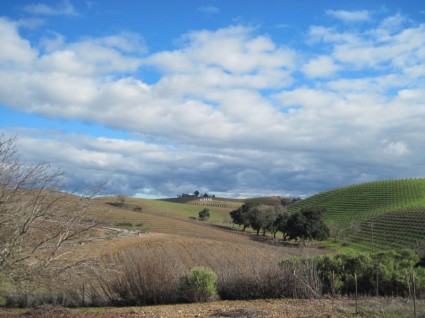
by Lorri | Aug 19, 2015 | UnCorked
I adore Champagne. I can drink it in the spring, summer, fall or winter. It pairs seamlessly with almost any food including, of all things, popcorn. But with this adoration comes a dilemma, most of us can’t afford it as an everyday drinking wine. Even the most humble of true Champagnes can cost $40 to $50 a bottle.
So how do we enjoy the bubbles without breaking the bank? My best advice is look outside of the Champagne region. Many of these bubbly wines are produced using the same technique as Champagne and sometimes even the same grapes.
The United States is quickly moving forward as a contender in offering value priced bubbly with just as much elegance. The label will read “Traditional Method” or “Methode Champenoise” because using the word “Champagne” is restricted outside of the French region of Champagne. Most American producers follow the same production methods and even the same traditional recipe of chardonnay, pinot noir and pinot meunier. Washington state is a region to keep your eyes on for not only the quality of its chardonnay and pinot noir grapes but for the price value of its products.
THE VALUE
- NV Domaine Ste. Michelle Brut, Washington (about $14 retail)
THE SPLURGE
- NV Treveri Cellars Brut, Washington (about $17 retail)
Spanish winemakers have been bottling bubbly for hundreds of years. Cava, the Spanish take on Champagne is much different, as they use indigenous grapes (macabeo, xarel-lo and parellada) but most are produced in the same method as Champagne. The resulting wine may not offer Champagne’s signature complexities but it does have a reliable, fresh fizz at half the price. This price savings makes Spanish sparkling a good pick for large parties or for cocktails such as the bellini and mimosa.
THE VALUE
- NV Segura Viudas Aria Estate Brut, Spain (about $13 retail)
THE SPLURGE
- NV Segura Viudas Brut Reserva Heredad, Spain (about $26 retail)
Germany, as with most of its wine, particularly riesling, seems to be a forgotten gem for the American wine drinker. Germany is a huge consumer and producer of sparkling wine, known as sekt or schaumwein in German. It is estimated that just over one in five bottles (22 percent) of the sparkling wine produced worldwide is consumed in Germany, more than any other country.
THE VALUE
- NV Schloss Biebrich Sekt, Germany (about $10 retail)
THE SPLURGE
- NV Von Buhl Sparkling Riesling, Germany (about $28 retail)

by Lorri | Aug 12, 2015 | UnCorked
The hot summer forces us to rethink our wine choices. A favorite red may be too heavy for the hot, humid weather. But by now you may be tiring of your favorite white.
This is also the time of year readers just seem to want a retail shopping list.
Whether you’re looking for something to serve friends at a backyard barbecue or just something to serve with dinner, the wine choices need to be refreshing this time of year.
Here’s my go-to shopping list that keeps vino the star beverage even in the heat of summer.
THE VALUES
- 2014 Montes Cherub Rosé, Chile (about $14 retail)
- 2014 Crios Malbec Rosé, Argentina (about $8 retail)
- 2014 New Harbor Sauvignon Blanc, New Zealand (about $13)
- 2014 Matchbook Chardonnay, California (about $14 retail)
- 2014 Dashwood Sauvignon Blanc, New Zealand (about $15 retail)
- 2014 The White Doe Blend, California (about $15 retail)
- 2012 Chateau Pilet Bordeaux Rouge, France (about $14 retail)
- 2014 14 Hands Sauvignon Blanc, California (about $14 retail)
THE SPLURGES
- 2014 Corallina Napa Valley Rosé, California (about $25 retail)
- 2014 Raptor Ridge Pinot Gris, Oregon (about $19 retail)
- 2014 Force of Nature Chardonnay, California (about $19 retail)
- 2014 Bell Winery Sauvignon Blanc, California (about $17 retail)
- 2014 Presqu’ile Winery Rosé, California (about $23 retail)
- 2012 Laurent Kraft Vouvray, France (about $23 retail)
- 2014 Hogwash Rosé, California (about $17 retail)
- 2014 La Cana Albarino, Spain (about $19 retail)

by Lorri | Aug 5, 2015 | UnCorked
This week I am writing about wine and temperature, but not the serving temperature of wine. I’m referring to the soaring heat of summer temperatures. Last week I wrote about cooling sweet treats to make with wine. This week, I offer more beat the heat tips to escape the unbearable outside weather.
For keeping wine chilled, consider the new Kim Crawford Wine Gems by Anna New York. Most of us have heard of “whiskey stones” but these are designed for wine. The colorful fluorite stones keep wine chilled without watering it down as ice cubes do. Simply store the stones in the freezer until you’re ready to use them. After a quick wash they are ready to go back in the freezer for the next wine cool-down. For more information, visit rablabs.com/collections/tabletop/products/wine-gems-kim-crawford.
This is an easy tip, but one that is often overlooked. When entertaining outside, don’t pour your guests’ wine glasses full. With a smaller pour guests may want to refill their glasses more often, but a full glass will take longer to drink and thus heat up before it is consumed.
And be sure to keep the bottle in an insulated bin, bucket or cooler. You can’t just place a bottle of white or red on the table in 100-degree temperatures and expect a refreshing, cool wine. There are many fancy insulated wraps on the market, but an ice bucket or container can do the trick. Fill the container with ice cubes, pour in a little water and then add the bottle. The water is key because it comes in complete contact with the bottle and cools it more quickly.
Temperature also affects your wines’ longevity. High temperatures are detrimental to the quality of the wine. If it’s left in a car or hot corner of the garage, the cork will start to pull away from the bottle and you are left with a roasting hot, vinegar-tasting wine.
My final tip: Hot weather is the ideal time to look at lower alcohol wines. Most whites and rosés are in the 12.5 percent to 13 percent range. Keep in mind some heavy, tannic reds can weigh in at over 14.5 percent.
THE VALUE
- 2014 Cline Cellars Viognier, California (about $12 retail)
THE SPLURGE
- 2014 Impatience Rosé, France (about $20 retail)

by Lorri | Jul 29, 2015 | UnCorked
Who says adults can’t have icy summer treats? As the summer heat continues bearing down on us I have been scouring magazines and the Internet for some of the best summer cool-down desserts and drinks. And of course wine is involved.
ICE CREAM FLOAT
This is a fun summer dessert and a glass of wine in one. Moscato’s sweetness and low alcohol make it the ideal wine for this ice cream float.
Moscato Float: Place two scoops of vanilla ice cream in a glass, add ½ cup of strawberry soda. Fill the remaining part of the glass with moscato.
- 2014 Zonin Moscato, Italy (about $9 retail)
ICE POPS
We called them popsicles as a child, but for a more grown-up feel, let’s call these ice pops. These are two of my favorites.
Pinot Noir Infused Blackberry Ice Pops: Make a simple syrup by combining 4 ounces of organic cane sugar and 4 ounces of water in a saucepan. Gently heat while stirring until sugar dissolves. Let cool. Take about 5 cups of fresh ripe blackberries and lightly puree. Combine the blackberries, simple syrup and 6 to 8 ounces of pinot noir. Pour into mold, add sticks and freeze.
- 2013 Mirassou Pinot Noir, California (about $12 retail)
Fig and Clementine Port Wine Ice Pop: Combine 2 cups of port wine, 2 pounds of peeled clementines, 1½ pounds of figs and ¼ cup of honey in a blender until pureed. Strain. Pour mixture into ice pop molds, add sticks and freeze.
GRANITA
Granita is a semi-frozen dessert made from sugar, water and flavoring. Originally from Sicily, it is similar to sorbet, but with an icy, grainy texture.
Red Wine Granita With Vanilla Ice Cream: Pour ½ bottle of red wine into a large baking dish. In a small pot heat 1 cup of water and 1/3 cup of sugar until sugar is dissolved. Pour sugar-water into the baking dish, stir to combine it with the wine. Place dish in freezer. After about 1 hour scrape ice crystals to the middle. Repeat every 30 minutes. (Takes about 4 hours.)To assemble, place one scoop of vanilla bean ice cream in a glass and top with generous spoonfuls of the granita.

by Lorri | Jul 22, 2015 | UnCorked
With all food crops, the quality of the harvest is dependent on the weather, and that’s especially true for grapes. This is why vintage is so important when it comes to wine selection.
The year on the bottle does not refer to the year the wine came to market but the year the grapes were grown and harvested. The differences in weather from year to year influence the quality and flavor of each harvest.
If frequent rain falls early in the growing season it will plump the grapes with water, leaving them with less flavor. Late frost or hail can kill budding grapes. A very damp season increases the chance of rot in the grapes. A very dry growing season often results in sweeter fruit with stronger flavors.
Each of these affect the final crop. This is why you may hear experts refer to the “best” vintage in so many years, most likely because Mother Nature created a perfect growing season.
The reason so much emphasis is placed on French wines and vintage is because of the country’s strict laws regarding wine production. A good example is water regulation. Most French producers are not allowed to use any kind of irrigation, so they have to rely on Mother Nature to do the job. Each year’s crop is at the mercy of the weather. In other parts of the world, growers have the option of using supplemental water sources. The differences make the growing cycle much more challenging to growers in countries like France.
When it comes to premium wine, the vintage will make a difference, but for everyday wines, my best advice is to buy the most recent vintage to ensure the freshest quality.

by Lorri | Jul 15, 2015 | UnCorked
It may sound a little odd when I tell you I enjoy sitting around a table with friends painstakingly trying to guess a wine I just tasted. But it’s something we wine geeks do a lot, and I think anyone who enjoys wine should share the experience. Blind-tasting wine is the skill of determining the grape variety, region, vintage and producer (recommended for experts only) by using only sensory cues — color, aroma and taste.
It’s an easy and fun event to host. Start by asking guests to bring one bottle of wine. It’s more fun if you don’t attempt to trick one another with blends and unknown varietals. Start with familiar grapes, such as an oaked chardonnay, sauvignon blanc, Riesling and moscato for whites and merlot, cabernet sauvignon, pinot noir and shiraz for reds.
The tasting setup and equipment are the same as for other tastings: wine and water glasses for each participant, a spittoon and a few palate-cleansing snacks. As I always say, spit early, spit often and spit with confidence, because there may be more wines for tasting than you need. The only difference in setup is the use of wine bags or other cover to hide the bottles. If you don’t want to splurge on wine bags, something as simple as aluminum foil works well. (For those oenophiles you even go another step to be sure they can’t see the bottle shape because it can give the wine away.) Put a number on each bottle starting with whites and then going to reds.
Here are few wines to bring to the party that are straightforward and fun to explore.
THE VALUES
- 2013 Matchbook Chardonnay, California (about $15 retail)
- 2013 Chateau Ste. Michelle Riesling, Washington (about $13 retail)
- 2013 Oyster Bay Sauvignon, New Zealand (about $14 retail)
THE SPLURGES
- 2013 Force of Nature Cabernet Sauvignon, California (about $19 retail)
- 2011 Raptor Ridge Estate Pinot Noir, Oregon (about $45 retail)
- 2011 Reynolds Family Winery Merlot, California (about $40 retail)




